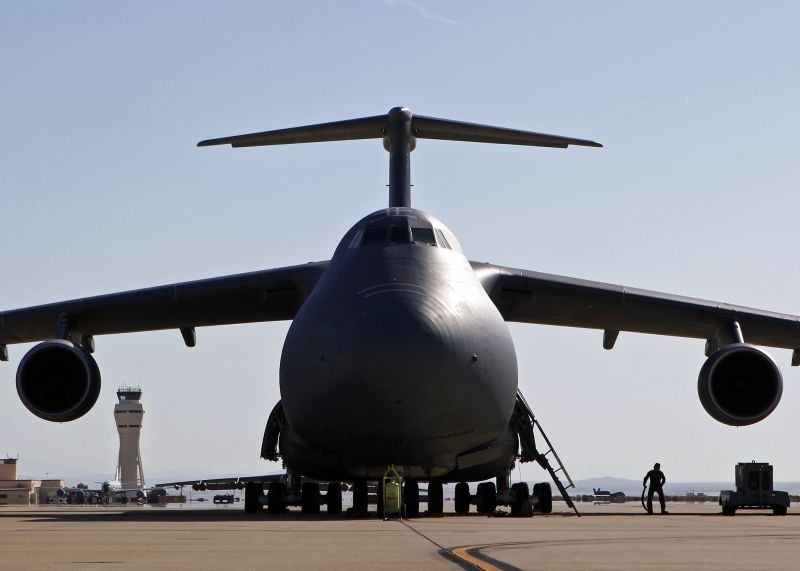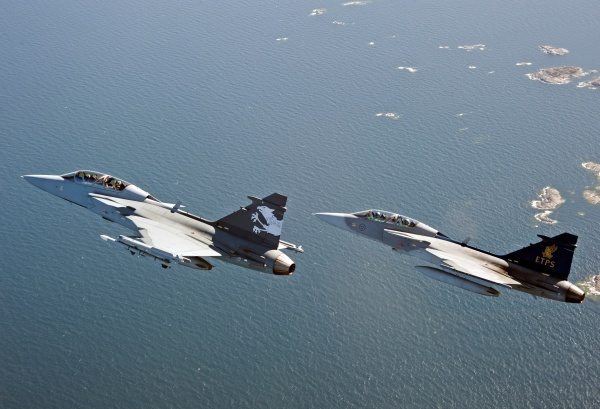In 2006, the C-5 Galaxy underwent a “super” upgrade to further strengthen the airframe’s worldwide airlift capabilities.
Test teams here and at Dover Air Force Base, Del., are showing why the recent software upgrade to the largest aircraft in the Air Force inventory — now known as the C-5M Super Galaxy — is no small task.
Officials tested the initial modifications at Dover AFB, then the aircraft was ferried back to Edwards AFB, where the test teams will accomplish the remaining flight test sorties this month.
“The C-5M Super Galaxy Block 3.5.2 software upgrade is intended to correct 72 deficiency reports that were documented during previous C-5M test programs,” said Joel Williams, the 775th Test Squadron C-5 lead engineer at the 418th Flight Test Squadron.
“The results of the 418th FLTS testing of 3.5.2 will help support a fielding decision by the program office at Wright-Patterson Air Force Base, Ohio,” said Maj. Zackary Schaffer, a 418th FLTS C-5 test pilot. “Additionally, data from this testing will be used by the development system manager at the Air Force Life Cycle Management Center at Wright-(Patterson AFB) to generate a program assessment summary to verify the C-5M retains the navigational performance and surveillance capabilities necessary for future airspace requirements.”
According to the C-5M test team, the systems affected by this software upgrade included the automatic flight control system, auto throttle, display services, embedded diagnostic system and flight management system.
“As part of the traffic collision and avoidance system testing, we had to develop test techniques to safely generate collision warnings in-flight,” Schaffer said. “With the help of pilots at the 445th Flight Test Squadron and the Massachusetts Institute of Technology’s Lincoln Laboratory, we were able to develop procedures using a T-38 Talon to generate all of the appropriate warnings while ensuring safe separation of aircraft throughout the test.”
Initially, the aircraft was modified with test instrumentation and software at Dover AFB, which required all of the checkouts, quality assurance inspections, and initial ground and flight testing to be conducted off-site.
“Thanks to the excellent coordination between Edwards AFB special instrumentation team, Lockheed Martin Aeronautics, and the 436th Maintenance Group, all the modifications were completed ahead of schedule with the airplane fully mission capable,” Schaffer said. “With help from the 436th Operations Group, we were able to schedule all of the range support necessary for our testing.”
Once the final portion of software upgrade testing is completed, Williams said the DR corrections will help bring many improvements to the C-5M Super Galaxy platform including a new vertical guidance mode, new glideslope capture capabilities, identify friend or foe mode S enhanced surveillance, and updated traffic collision and avoidance logic.
The C-5 Galaxy development system manager, C-5 Division (AFLCMC/WLS), at Wright-Patterson AFB, will use the result of testing to support airworthiness certification of the software update. The testing results will also support certification of readiness for operational testing that will be conducted by the Air Mobility Command Test and Evaluation Squadron.
C-5M Super Galaxy Block 3.5.2 software upgrade testing is projected to be completed by the end of this month. Air Force officials plan to upgrade 52 Galaxies to “super” status by the end of 2016.











